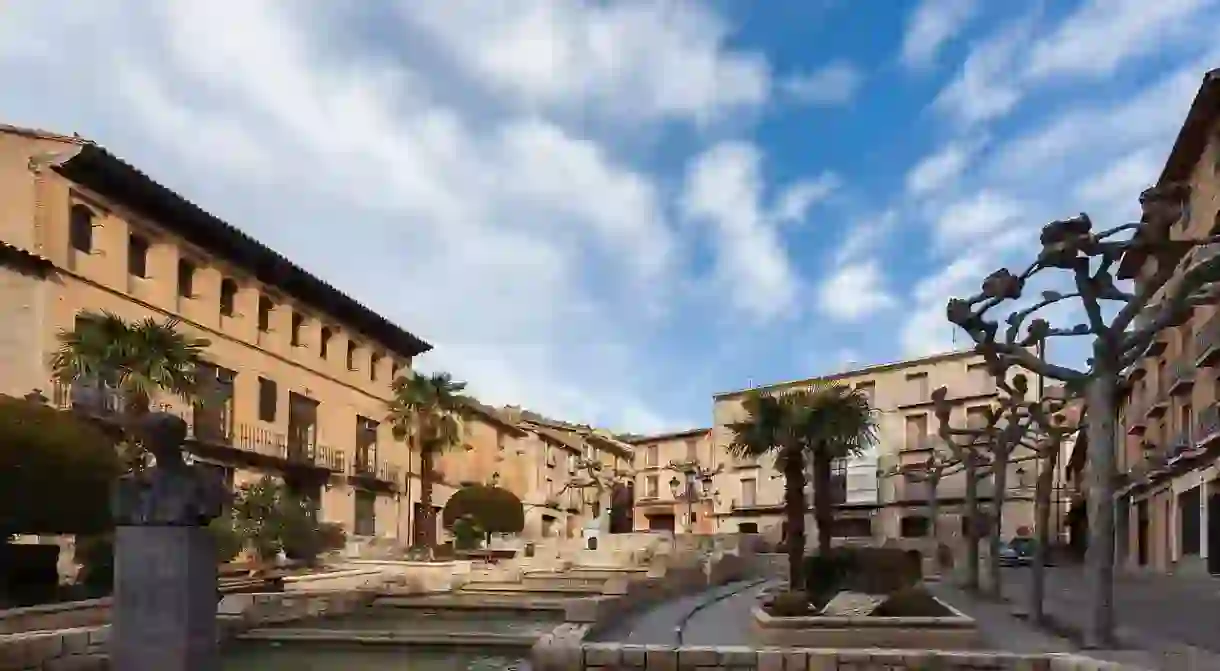The Top 10 Things to See and Do in Daroca, Spain

Daroca is a historic city located in the Jiloca Valley in Spain’s region of Aragón. It is designated as a Property of Cultural Interest in recognition of its historic buildings and mix of both Moorish and Christian religious architecture. Here are our top things to see and do in Daroca.
Palacio de los Luna
Building

The Palacio de los Luna is a Mudéjar style palace. It was commissioned by Pedro Martínez de Luna during the 14th century – the man who would become Benedict XIII or ‘Papa Luna’. It features stunning Gothic plasterwork with overhanging wooden roofs and has three floors. Inside, the original Mudéjar rooms are beautifully preserved, as are the coffered ceilings. It is currently closed to the public, but is worth a detour to see the outside.
Iglesia de Santo Domingo de Silos
Church

The Church of Santo Domingo de Silos is a Mudéjar and Romanesque style construction built in the 14th century, on top of a Roman temple from the 12th and 13th centuries. It is one of the oldest Mudéjar constructions in the whole of Spain. Built from Moorish style brick, its tower features Islamic decorations, while the main nave has elegant Romanesque style windows. Although the church was renovated in the 18th century, it still retains much of its Moorish past.
Jewish Quarter
One of the top things to do here is just simply wander around Daroca’s old Jewish Quarter. It’s filled with beautiful Renaissance and Baroque buildings from the 16th and 17th centuries.
Mina de Daroca
Ruins

One of the most important constructions in Europe during the 16th century, La Mina de Daroca is called a mine, but it’s actually a long tunnel, which goes underneath San Jorge Hill to the town next door. It was constructed to funnel the rain waters which fell down the ravines of Retascón and ran through the centre of the city, causing major damage. The tunnel was designed by Pierres Bedel and work began on it in 1555, although it wasn’t fully completed until 1570. Today, visitors can still see the tunnel, as well as ‘the barbican’ – its strong 300-meter-long wall, which also serves as support for the back of the Bullring.
Pastry Museum Manuel Segura
Museum

This fascinating pastry museum stands opposite the Pastelerias Manuel Segura SL cake and pastry shop, near the town’s tourist office. The pastry shop was established back in 1874 and has been run by five generations of the same family ever since. Traditional methods of baking are always used here, using old machinery. To celebrate the bakery’s 125th anniversary in 2002, a three-storey museum was opened opposite. The first floor is dedicated to chocolate, the second to equipment and tools used to make sweets, and the third to essential ingredients such as flour, eggs, milk and honey.
Parroquia de Santa María de los Sagrados Corporales
Church

The church and collegiate of Santa María de los Sagrados Corporales is one of the most important in Daroca. Built in a Romanesque style during the 12th century, it has been added to over the years, comprising both Gothic and Renaissance elements. During the 16th century, the architect Juan Marrón was responsible for adding 3,000 square metres to the original Romanesque temple in a Renaissance style.
City Walls
The medieval city of Daroca was once entirely surrounded by high city walls with a citadel, castle and defence towers. Today, three and a half kilometres of the city wall still remain, which date back to the 13th and 14th centuries. Take a walk around them to see some of the oldest parts of the city.
Puerta Baja
Building

The Puerta Baja is the Lower Gate, which was one of the main entrances to the old fortified city and it still stands grand and proud. It was thought to have been built in the 13th century as a single defence tower, but was later modified in 1451 to create two towers and connecting bridge. Later, in the 16th century, the imperial shield of Carlos V was added to the front.
Castillo Mayor
Building, Ruins

The Castle of Daroca stands at the top of the old Moorish citadel, looking down on the city. It is believed to have been built around the 11th century, because of the old Islamic style plasterwork found here. It is rectangular in shape and still features the remains of an old cistern, barracks installed during the 19th century, and a deep tunnel, which used to carry groundwater to the castle. One of its main features is the Zoma Tower. Today, it is mostly in ruins, but is still fascinating to look at.
Corpus Christi celebrations
Corpus Christi is a religious celebration, which is celebrated in Spain around nine weeks after Easter. It is celebrated differently all over the country, but is particularly good to see in Daroca. The celebration here commemorates the Miracle of the Santos Corporales – which occurred in 1239. It is said that Christian troops from Daroca were preparing to fight the Moors in Valencia and were planning to take holy communion before they did. They were attacked before they could however, so the priest took the consecrated hosts, wrapped in corporals, up to the mountain. When he opened them, he found them soaked in blood, which he took as sign that they would win the battle. The festival is celebrated with many parades and processions.













